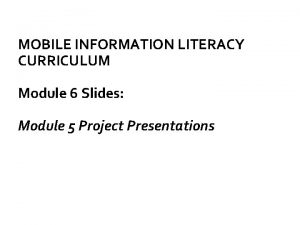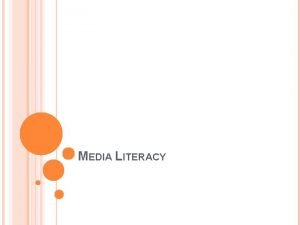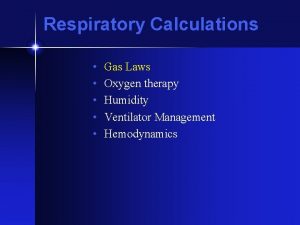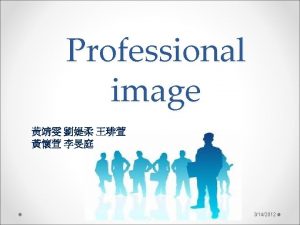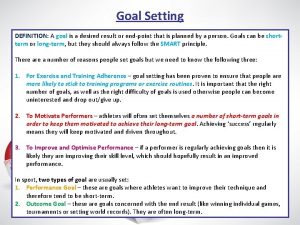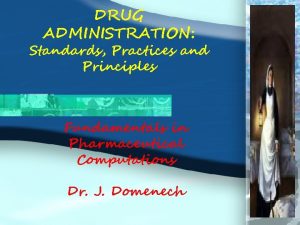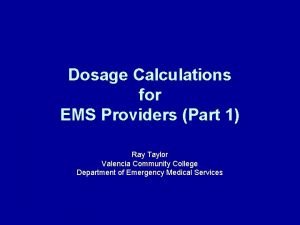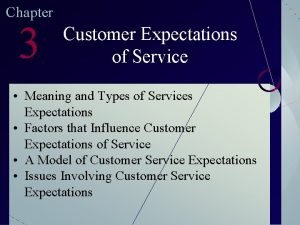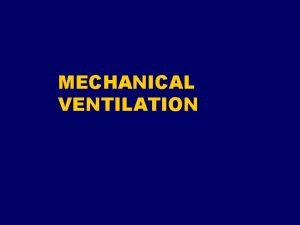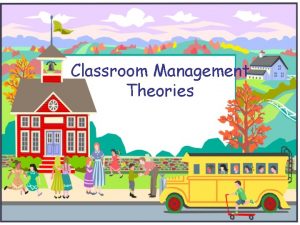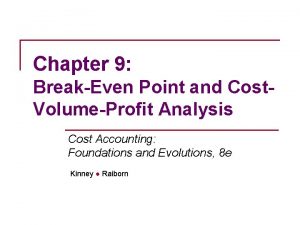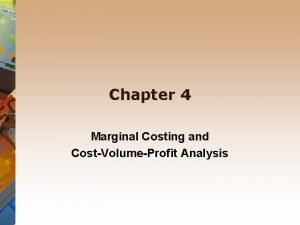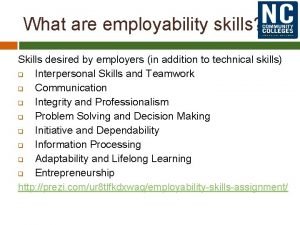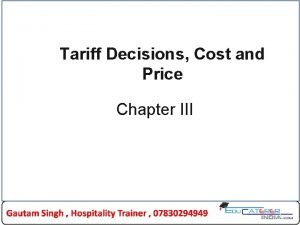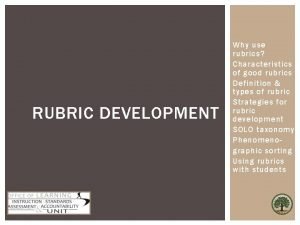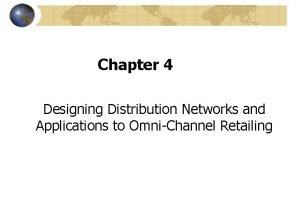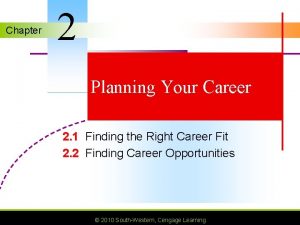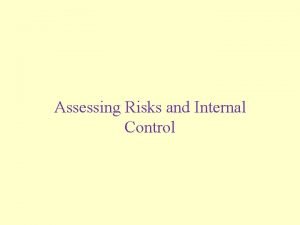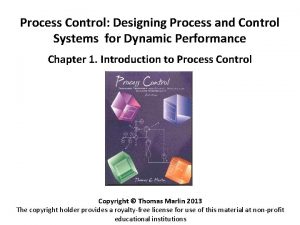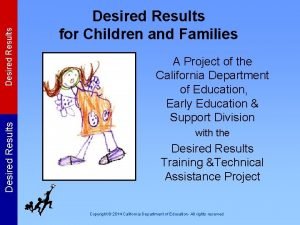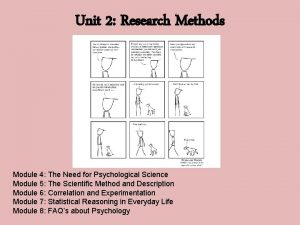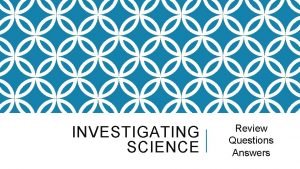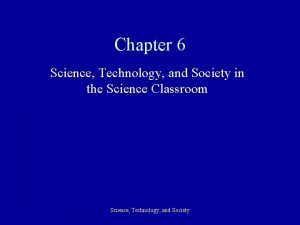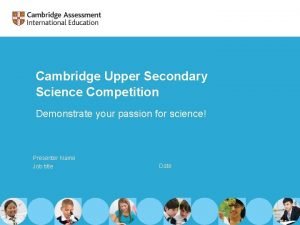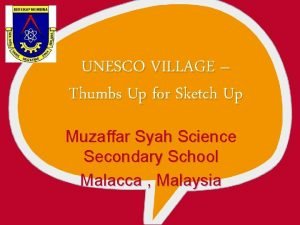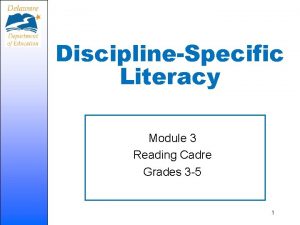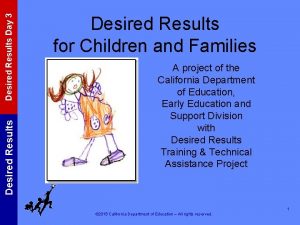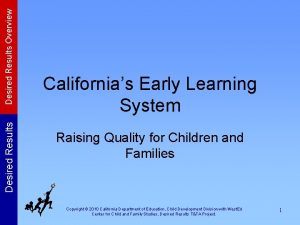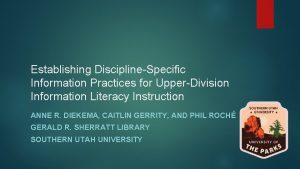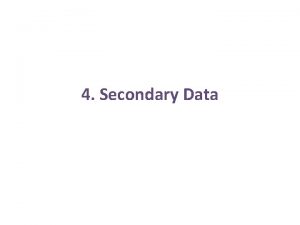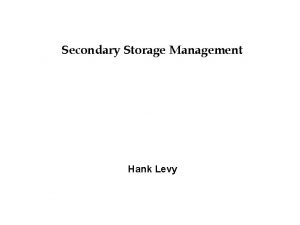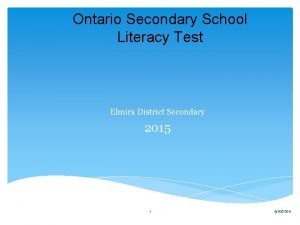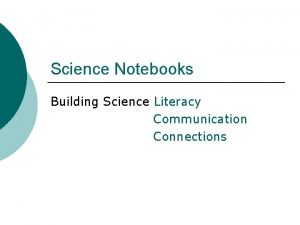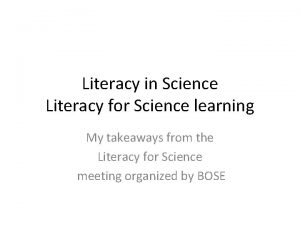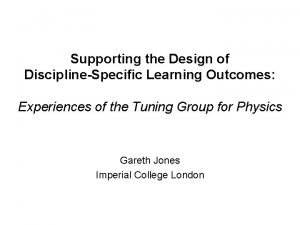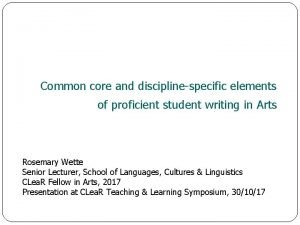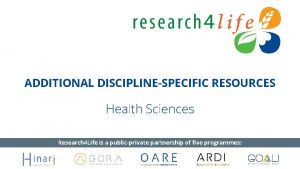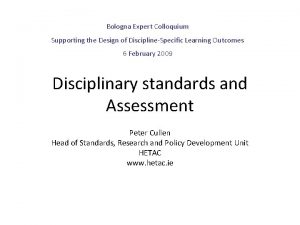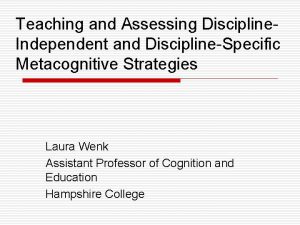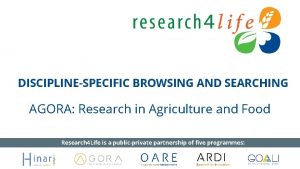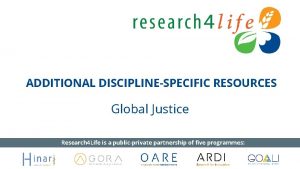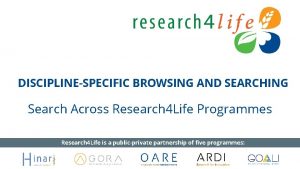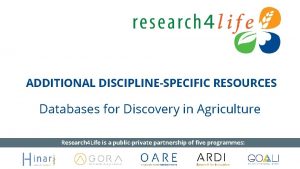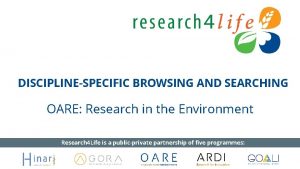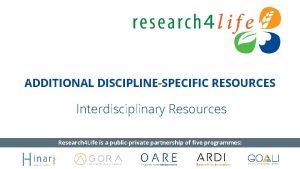DisciplineSpecific Literacy Module 3 Secondary Science 1 Desired





























![Literacy Design Collaborative (LDC) • The Literacy Design Collaborative [LDC] offers a fresh approach Literacy Design Collaborative (LDC) • The Literacy Design Collaborative [LDC] offers a fresh approach](https://slidetodoc.com/presentation_image_h2/df7b56528eb955ea483f2943b0355902/image-30.jpg)





- Slides: 35

Discipline-Specific Literacy Module 3 Secondary Science 1

Desired Outcomes § Become familiar with the Common Core State Standards (CCSS) for literacy in science and how they are organized § Provide a rationale as to why teachers need to address the CCSS for literacy in science § Describe some ways that teachers can address the CCSS for literacy in science

Literacy Defined Literacy is the ability to understand use language and images to acquire knowledge, communicate and think critically in all content and contexts. Literacy for Learning, Hawaii State Dept. of Education, April 2009

Key Design Considerations for Common Core Standards § An integrated model of literacy § Research and media skills blended into the standards as a whole § Shared responsibility for students’ literacy development Science Literacy English Technical Subjects History/ Social Studies

Why Literacy in Science? College and Career Ready § Gap between college and high school texts about 4 grade levels § 8 th grade texts = former 5 th grade texts § 12 th grade texts = former 7 th grade texts (compared to 40 years ago) Susan Pimental’s “Transitioning to the Common Core State Standards” 7/28/11 Presentation at OCISS

Academic Literacy Video • Literacy in Other Disciplines 6

Science + Literacy Do you use any of these? § Science Talks/Discussions § Science Notebooks § Reading Expository Text § Formal Scientific Reports § Journal

Why Science Literacy Standards? Scientific texts pose specialized challenges to inexperienced and struggling readers. --Reading in the Disciplines: The Challenges of Adolescent Literacy, Carol D. Lee and Anika Spratley 8

Teaching Features Text Features Literary Informational • Title • Chapter Index (for Chapter Books) • Illustrations • Bold Print • Continuous Text • Paragraphing • Dialogue • Title • Table of Contents • Index* • Photos • Captions • Diagrams • Glossary • Date Line (periodicals) • Bold Print • Headings • Sub-titles *The more readers build up knowledge about these elements and underlying structures, the better they can use them as sources of information. 9

Teaching Structures Structure (Organization) Literary Informational Story Elements: • Characters • Setting • Problem/Solution • Plot • Cause and Effect • Sequence • Problem/Solution • Description • Compare and Contrast 10

Scientific Texts include: • • • Abstracts Section Headings Figures Tables Diagrams • • • Maps Drawings Photographs Reference Lists Endnotes 11

Question: How can we support our students? Answer: Discipline Specific Literacy • More sophisticated and specific kinds of literacy support is necessary • Requires a particular type of reading – --Reading in the Disciplines: The Challenges of Adolescent Literacy, Carol D. Lee and Anika Spratley 12

How do the following work together to support readers? • Standards • Teacher Instruction • Assessments 13

Standards: Activity- match the ELA anchor standard with the Literacy in science standards 14

6 -8 Instruction: Article 15

Standard 9, Grades 6 - 8 • Compare and contrast the information gained from experiments, simulations, videos, or multimedia sources with that gained from reading a text on the same topic. 16

Standard 9, Grades 6 - 8 • The Task: • Watch a video about the earth’s crust and tectonic plates, then read the article “Earth’s Big Breakup”. – Compare and contrast the amount and type of information conveyed by each source. – Explain how each helps to develop understanding of plate tectonics. 17

Double Bubble Organizer Video Article 18

Video 19

Standard 2, Grades 9 - 10 • Determine the central ideas or conclusions of a text; trace the text explanation or depiction of a complex process, phenomenon, or concept; provide an accurate summary of the text. 20

Standard 2, Grades 9 - 10 The Task: • Provide an accurate summary of the article, “Earth’s big breakup. ” Article The Process: • Read the article, complete the graphic organizer to write an accurate summary 21

22

Reading Standards for Literacy in Science and Technical Subjects Grades 6 -8 Grades 9 -10 Grades 11 -12 2. Determine the central ideas or conclusions of a text; provide an accurate summary of the text distinct from prior knowledge or opinions. 2. Determine the central ideas or conclusions of a text; trace the text’s explanation or depiction of a complex process, phenomenon, or concept; provide an accurate summary of the text. 2. Determine the central ideas or conclusions of a text; summarize complex concepts, processes, or information presented in a text by paraphrasing them in simpler but still accurate terms.

Standard 6, Grades 11 - 12 • Analyze the author's purpose in providing an explanation, describing a procedure, or discussing an experiment in a text, identifying important issues that remain unresolved 24

Standard 6, Grades 11 - 12 The Task: • To analyze the Author’s Purpose in providing an explanation and to identify important issues that remain unresolved. The Process • Read the article, “Intraplate Quakes Signal Tectonic Breakup” Article. • Complete graphic organizer on Author’s Purpose 25

26

Assessment Examples • Students analyze the concept of mass based on their close reading of Gordon Kane’s “The Mysteries of Mass” and cite specific textual evidence from the text to answer the question of why elementary particles have mass at all. Students explain important distinctions the author makes regarding the Higgs Field and the Higgs Boson and their relationship to the concept of mass. [RST. 11– 12. 1] 27

SBAC Performance Task (Link) • Write an argumentative report that recommends the position that your congresswoman should take on the plan to build a nuclear power plant in your state. Support your claim with evidence from the Internet sources you have read and viewed. You do not need to use all the sources, only the ones that most effectively and credibly support your position and your consideration of the opposing point of view. 28

Grade 8 Sample- NYCDOE • Write an argumentative essay in which you introduce a claim arguing for or against the United States investing money on renewable energy resources. Your essay should consider how the choice between investing in either renewable energy or non-renewable energy resources will affect both the environment and the economy. Depending on whether or not you think the United States should continue investing money in renewable resources, acknowledge and distinguish the opposing claim, and organize the reasons and evidence logically. Support your claim with clear reasons and cite relevant textual evidence from at least three articles read or discussed during this unit. Include domain-specific vocabulary and maintain a formal style. 29
![Literacy Design Collaborative LDC The Literacy Design Collaborative LDC offers a fresh approach Literacy Design Collaborative (LDC) • The Literacy Design Collaborative [LDC] offers a fresh approach](https://slidetodoc.com/presentation_image_h2/df7b56528eb955ea483f2943b0355902/image-30.jpg)
Literacy Design Collaborative (LDC) • The Literacy Design Collaborative [LDC] offers a fresh approach to incorporating literacy into middle and high school content areas. Designed to make literacy instruction the foundation of the core subjects, LDC allows teachers to build content on top of a coherent approach to literacy. 30

http: //www. literacydesigncollaborative. org/ 31

Desired Outcomes § Become familiar with the Common Core State Standards (CCSS) for literacy in science and how they are organized § Provide a rationale as to why teachers need to address the CCSS for literacy in science § Describe some ways that teachers can address the CCSS for literacy in science

Redefining Inquiry in Science Being science literate entails being able to read and understand a variety of science texts to form valid conclusions and participate in meaningful conversations [discussion] about science. In Zmach et al. , 2006 -2007, p. 62 33

List of References- Links Embedded – Literacy for Social Studies/History, Science and Technical Subjects Standards – Literacy Design Collaborative – Literacy for Learning, Hawaii State Dept. of Education, April 2009 – Susan Pimental’s “Transitioning to the Common Core State Standards” 7/28/11 Presentation at OCISS – The Hunt Institute – The NY Dept. of Education Reading in the Disciplines: The Challenges of Adolescent Literacy, Carol D. Lee and Anika Spratley – Science News for Kids – Fresno Dept. of Education – You Tube – Austin Schools 34

Module Extensions – Ways to identify literacy demands of the content area – Evidence of the Shifts in Practice – List of discipline-specific genres (what do scientists read…) – List of anchor texts (examples of the above) – Examples of reading like, “a historian”, “scientist”, “mathematician”, etc. – Using discipline-specific text as models for writing – Research that supports literacy in this discipline – Examples of some of the literacy standards 35
 Media literacy vs information literacy comparison
Media literacy vs information literacy comparison Berlos model of communication
Berlos model of communication Two types of people media are
Two types of people media are Cyber literacy and digital literacy
Cyber literacy and digital literacy Pe is my favourite subject
Pe is my favourite subject Media and information literacy module 6
Media and information literacy module 6 C device module module 1
C device module module 1 Science literacy warm up
Science literacy warm up Tidal volume normal range
Tidal volume normal range Professional image definition
Professional image definition Definition of goal setting
Definition of goal setting Drug dose calculation formula
Drug dose calculation formula Drop factor formula with example
Drop factor formula with example Temporary service intensifiers
Temporary service intensifiers Dual customer expectation levels
Dual customer expectation levels Desired fio2 formula
Desired fio2 formula Advantage and disadvantage of general partnership
Advantage and disadvantage of general partnership The canter model
The canter model The breakeven point is the activity level where
The breakeven point is the activity level where Marginal costing format
Marginal costing format Skills desired by employers
Skills desired by employers Hubbart formula in hotel
Hubbart formula in hotel Characteristics of good rubrics
Characteristics of good rubrics New state drink
New state drink Desired response time and number of facilities
Desired response time and number of facilities A(n) is a desired end toward which efforts are directed.
A(n) is a desired end toward which efforts are directed. Ar = ir x cr x dr
Ar = ir x cr x dr Process control design
Process control design Desired packaging
Desired packaging Drdp summary of findings
Drdp summary of findings Module 4 the need for psychological science
Module 4 the need for psychological science Investigating science sample questions
Investigating science sample questions Science, technology and society module answer key
Science, technology and society module answer key Cambridge upper secondary science competition
Cambridge upper secondary science competition Muzaffar syah science secondary school
Muzaffar syah science secondary school Natural vs social science
Natural vs social science





